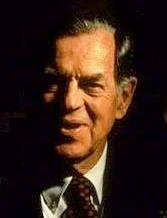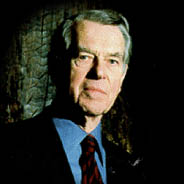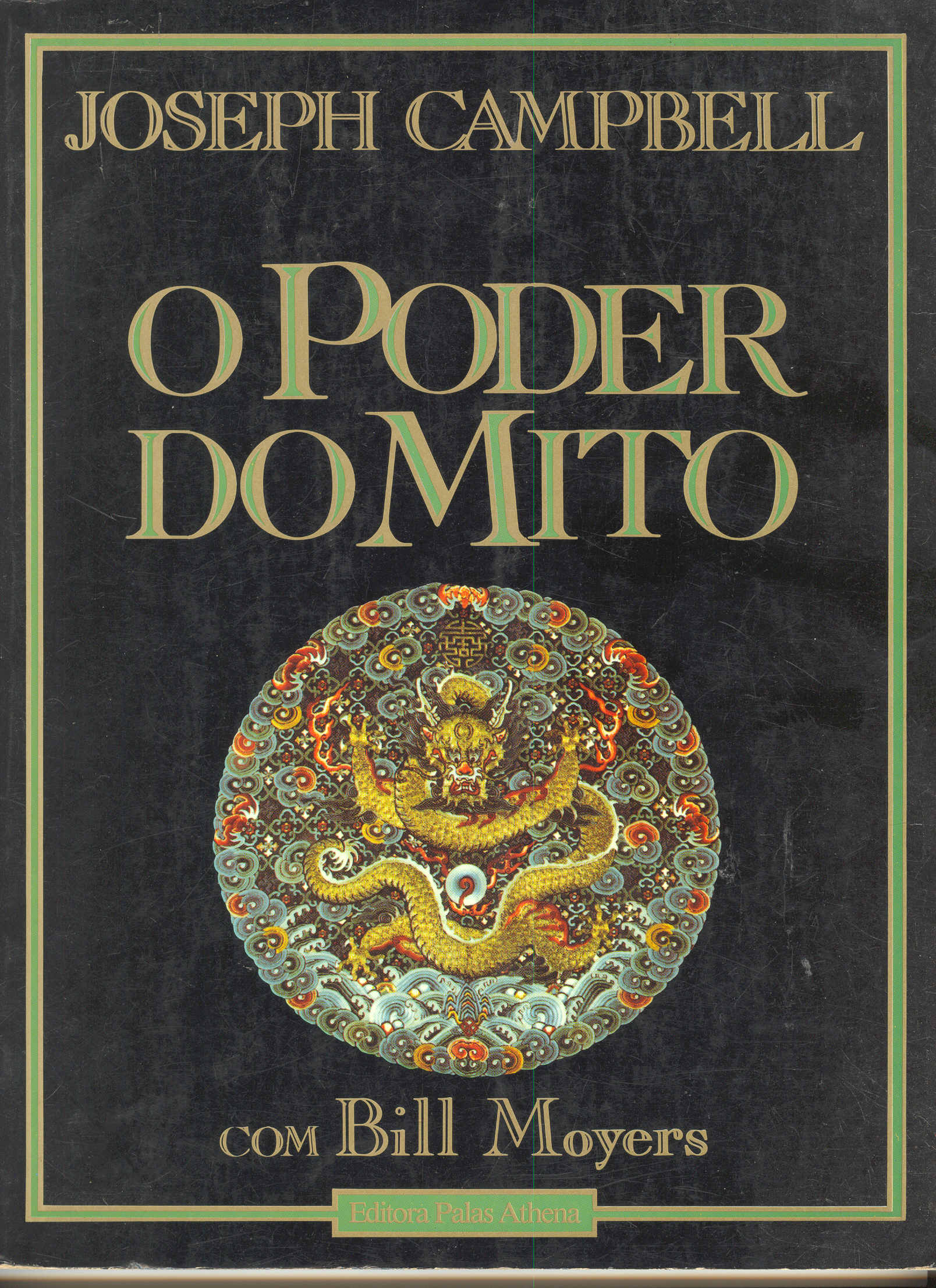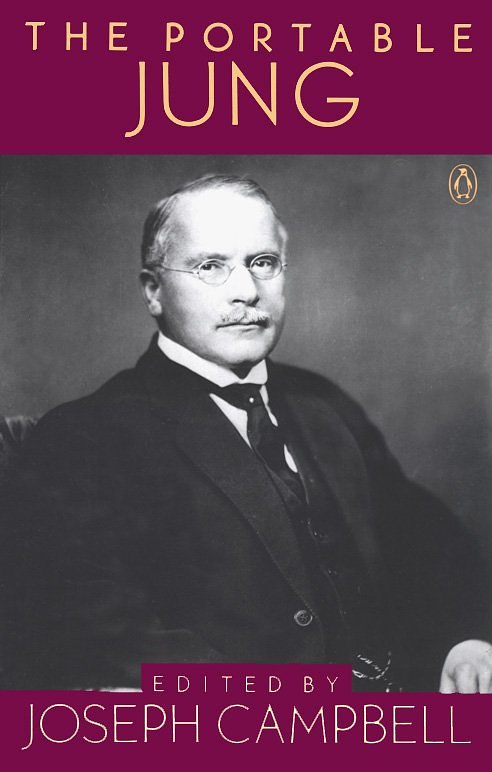 Joseph Campbell
Joseph Campbell
Você pode ter chegado aqui ou pela discussão da natureza dos símbolos nos esquemas de Linatti e Stewart-Gorman, ou pela discussão sôbre técnica.
Em ambos os casos, leia antes este artigo e depois veja como Campbell vê isto para o caso de Ulsses, que é uma expansão da comparação feita para Star Wars e Matrix, ou Lord of The Rings, ou qualquer similar, que podem ser vistos no site indicado no corpo do texto.
Nascido em New York, em 1904, em morto em 1986, Joseph Campbell bacharelou-se em artes em 1925 e tirou seu mestrado também em artes em 1927 na Universidade de Columbia. De lá saiu para estudar Francês medieval e Sânscrito nas Universidades de Paris e Munich e, nesta cidade, tomou conhecimento dos trabalhos de Jung. Voltando para os Estados Unidos nos anos 30, da Grande Depressão, ele visitou a California, onde conheceu John Steinbeck e o biólogo Ed Ricketts. Lecionou na Canterbury School e em 1934, juntou-se ao departamento de literatura da Sarah Lawrence College, posição que reteve durante muitos anos. Nos anos 40 e 50, ele ajudou Swami Nikhilananda traduzir as Upanishads e Os Ensinamentos de Sri Rama-krishna.
Adquiriu grande popularidade tanto nos EUA como no resto do mundo após a publicação do livro "O Poder do Mito", que é a transcrição de uma série de programas de entrevista que ele fez com Bill Boyers na televisão pública americana dois anos antes de morrer.
Joseph Campbell e O Poder do Mito é leitura essencial para qualquer pessoa suficientemente madura para apreciar seus ensinamentos vitais. Uma das entrevistas mais longas já gravadas, este encontro de 6 horas dificido em 6 partes entre o professor mitologo e o estudante jornalista Bill Moyers cobre uma galaxia de topicos relacionados com os temas centrais de Campbell.
A mitologia é o método universal da humanidade para procurar o transcendental e a fórmula "siga o que te traz bem aventurança" é a formula eterna de satisfação espiritual.
O próprio Campbell é a materialização destes temas, como professor erudito e contador de historias, através dos mitos presentes na historia japonesa, dos indios americanos nativos, dos egipcios, dos maias e muitos outros, que ilustram a eterna busca da humanidade para captar os misterios da criação.
Artefatos historicos e ilustrações trazem à vida estas historias eternas.
Bill Moyers, como astuto entrevistador,
forma um par perfeito de acólito(coroinha ajudante)/mentor com Campbell,
propondo questões com profunda penetração numa dança
intelectual que atinge niveis exilariantes de satisfação e sentido.
A introdução da saga do filme de Star Wars de George Lucas dá a tônica (existe um DVD do George Lucas sendo entrevistado a propósito), uma vez que ele reconhece que "Eu não criei novos mitos, apenas recontei de forma moderna os mitos antigos".
Ocorre o mesmo para a obra posterior de Matrix e a recente do Senhor dos Anéis, onde tanto os irmãos Wachowski como Tolkien seguem a mesma saga de George Luccas. Ver abaixo a comparação entre Matrix e Star Wars e sua lógica à luz da mitologia de Campbell.
O sucesso destes filmes não se deve apenas à tecnologia computadorizada, mas ao fato de que, como concluiu Campbell, "nós precisamos de mitos para sobreviver como de oxigenio para respirar, como uma força vital através da qual nos entendemos nossa existencia, passada, presente e futura."<
Outros livros seus incluem numerosos títulos, salientando-se: O Heroi Das Mil Faces, Mitos Pelos Quais Vivemos,O Vôo do Ganso Branco, um estudo de quatro volumes intitulado As Máscaras de Deus e A imagem Mitica.
Além do Jung Portátil ele editou As Mil e Uma noites portátil.
Em Português creio que só
temos dele "O Poder do Mito", editado pela Palas Athena.


.jpg)

Porque ele editou Jung
In 1949 Joseph Campbell (1904-1987) made a big splash in the field of mythology with his book The Hero With a Thousand Faces. This book built on the pioneering work of German anthropologist Adolph Bastian (1826-1905), who first proposed the idea that myths from all over the world seem to be built from the same "elementary ideas." Swiss psychiatrist Carl Jung (1875-1961) named these elementary ideas "archetypes," which he believed to be the building blocks not only of the unconscious mind, but of a collective unconscious. In other words, Jung believed that everyone in the world is born with the same basic subconscious model of what a "hero" is, or a "mentor" or a "quest," and that's why people who don't even speak the same language can enjoy the same stories.
Jung developed his idea of archetypes mostly as a way of finding meaning within the dreams and visions of the mentally ill: if a person believes they are being followed by a giant apple pie, it's difficult to make sense of how to help them. But if the giant apple pie can be understood to represent that person's shadow, the embodiment of all their fears, then the psychotherapist can help guide them through that fear, just as Yoda guided Luke on Dagoba. If you think of a person as a computer and our bodies as "hardware," language and culture seem to be the "software." Deeper still, and apparently common to all homo sapians, is a sort of built-in "operating system" which interprets the world by sorting people, places, things and experiences into archetypes.
Campbell's contribution was to take this idea of archetypes and use it to map out the common underlying structure behind religion and myth. He proposed this idea in The Hero With a Thousand Faces, which provides examples from cultures throughout history and all over the world. Campbell eloquently demonstrates that all stories are expressions of the same story-pattern, which he named the "Hero's Journey," or the "monomyth." This sounds like a simple idea, but it suggests an incredible ramification, which Campbell summed up with his adage "All religions are true, but none are literal." That is, he concluded that all religions are really containers for the same essential truth, and the trick is to avoid mistaking the wrappings for the diamond.
Lucas had already written two drafts of Star Wars when he rediscovered Joseph Campbell's The Hero With a Thousand Faces in 1975 (he had read it in college). This blueprint for "The Hero's Journey" gave Lucas the focus he needed to draw his sprawling imaginary universe into a single story.
This page generates an enormous amount of reader feedback: everyone agrees with the basic structure, but most have a different interpretation of exactly which story elements embody which archetypes. Great! I don't believe there are "correct" and "incorrect" interpretations: the capacity to accomodate multiple viewpoints is part of the secret of Star Wars' incredible ability to connect with people.
Note that the Wachowski Brothers'
wonderful film The Matrix is built with the same blueprint:
Campbell: Star Wars vs.The Matrix Comparative analogy
| Star Wars | Matrix | |
| I: Departure | ||
| The call to adventure | Princess Leia's message | "Follow the white rabbit" |
| Refusal
of the call |
Must help with the harvest | Neo won't climb out window |
| Supernatural aid | Obi-wan rescues Luke from sandpeople | Trinity extracts the "bug" from Neo |
| Crossing the first threshold | Escaping Tatooine | Agents capture Neo |
| The belly of the whale | Trash compactor | Torture room |
| II: Initiation | ||
| The road of trials | Lightsabre practice | Sparring with Morpheus |
| The meeting with the goddess | Princess Leia | Trinity |
| Temptation away from the true path1 | Luke is tempted by the Dark Side | Cypher (the failed messiah) is tempted by the world of comfortable illusions |
| Atonement with | the Father Darth and Luke reconcile | Neo rescues and comes to agree (that he's The One) with his father-figure, Morpheus |
| Apotheosis (becoming god-like) | Luke becomes a Jedi | Neo becomes The One |
| The ultimate boon | Death Star destroyed | Humanity's salvation now within reach |
| III: Return | ||
| Refusal of the return | "Luke, come on!" Luke wants to stay to avenge Obi-Wan | Neo fights agent instead of running |
| The magic flight | Millennium Falcon | "Jacking in" |
| Rescue from without | Han saves Luke from Darth | Trinity saves Neo from agents |
| Crossing the return threshold | Millennium Falcon destroys pursuing TIE fighters | Neo fights agent Smith |
| Master of the two worlds | Victory ceremony | Neo's declares victory over machines in final phone call |
| Freedom to live | Rebellion is victorious over Empire | Humans are victorious over machines |
| Common Mythic Elements | ||
| Two Worlds (mundane and special) | Planetside vs. The Death Star | Reality vs. The Matrix |
| The Mentor | Obi-Wan Kenobi | Morpheus |
| The Oracle | Yoda | The Oracle |
| The Prophecy | Luke will overthrow the Emperor | Morpheus will find (and Trinity will fall for) "The One" |
| Failed Hero | Biggs In an early version of the script | Morpheus once believed that Cypher was "The One" |
| Wearing Enemy's Skin | Luke and Han wear stormtrooper outfits | Neo jumps into agent's skin |
| Shapeshifter(the Hero isn't sure if he can trust this character) | Han Solo | Cypher |
| Animal familiar | R2-D2 Chewbacca The Sentinels are the only metaphorical animals | and Neo hasn't befriended one (yet?) |
|
Personal Myth 1 Chasing a lone animal into the enchanted wood (and the animal gets away) |
Lucas draws on his Personal
Myth Follows R2D2 into the Jundland Wastes; |
Neo "follows the white rabbit" to the nightclub where he meets Trinity |
-------------------------------------------------------------------------------
1 In 1949 Campbell called this mythic element
"woman as temptress," but both Lucas and the Wachowski Brothers (as
well as countless others) have managed to imagine compelling temptations away
from the Correct Path which didn't cast woman as the villain. Campbell's idea
that woman represents impurity was probably influenced by his Judeo-Christian
upbringing, which shifts the responsibility for Adam's fall to Eve. Although
Campbell's book is scrupulously cross-cultural, the one exception is his chapter
on "Woman As the Temptress," which draws examples exclusively from
Judeo-Christian myths.
2 Mythic heroes are nearly always lured into the enchanted wood by chasing a single animal, and the animal almost always escapes. I find this one of the most fascinating, difficult-to-understand commonalities of myth. For instance, in Le Morte D'Arthur (the most "official" version of King Arthur), the king chases a stag into a strange forest, his horse falls dead from exhaustion, the stag escapes, and Arthur meets "the strangest beast that ever he saw or heard of," Pellinore's Questing Beast. What the heck are we supposed to learn from that?!?! I'm still not sure, though I've found two clues: One, the hero usually thinks the chase will be easy: Han doesn't consider a single TIE fighter a threat, the White Rabbit Girl implies that she's sexually available to Neo, and Arthur forsees no difficulty catching the stag. But the animal always escapes! Two, if there's a single consistant "moral law" in myth, it's this: "People who are nice to helpless little bunnies are always rewarded." (And people who are mean to helpless little bunnies are always punished.) In fairytales and myth, animals represent the instinctual self (unless they can talk, in which case things get more complicated). So is the hero trapped in the enchanted wood as... punishment for dishonoring his instincts? A reward for following his instincts?
In the case of Joyce's Ulysses, the chief element in the whole story is the "woman as temptress"
Searching For The Hero
Jung and Campbell aren't
the only people who have attempted to map the Hero's Journey! There have been
dozens of less celebrated forays into this area, and just about everyone comes
to slightly different conclusions. Notable works include:
German philologist Max Müller (1823-1900) got the ball rolling with an
influential essay called Comparative Mythology, first published in Oxford Essays
(1856). According to The Columbia Encyclopedia, "Müller did
more than any other scholar to popularize philology and mythology, particularly
in his lectures Science of Language (1861, 1863)." In my opinion
Müller's scholarship was weakened because he proceeded from two basic assumptions
without questioning them: (1) that fairytales were inferior drivel for children,
and (2) that his faith was valid and all other faiths were primitive superstitions.
For instance, Müller was one of the first people to introduce Hindu scripture
into Europe, by translating the Rig-Veda. It was of course unthinkable
that the Veda could actually be older than The Hebrew Bible, and anyway the
King James Bible says right there in black and white (in a margin note
new to the 1611 edition) that the Earth was created in 4,004 BCE, so Müller
changed all the Vedic dates to suit that "historical fact." Eeek!
(It turns out parts of the Veda seem to have been composed before 4,004 BCE.
So the Vedic faith began before the King James version of the Earth even existed.
Müller also wrote disparaging essays about German folktales, which tend
to revolve around an idea called poetic irony.) Müller wrote that the Vedas
are mostly "childish in the extreme, tedious, low and commonplace."
Can a translator really do justice to a work he holds in contempt? Müller's
two-volume Contributions to the Science of Mythology (1897) argued that
mythology is "a disease of language." J.R.R. Tolkien, in his 1938
essay On Fairy-Stories, countered "It would be more near the truth to say
that languages, especially modern European languages, are a disease of mythology."
In all fairness it's a bit petty to make fun of Müller for his religious
intolerance, particularly since the other 19th-century German academics he hung
out with considered him bizarrely respectful of the "silly superstitious
beliefs" of non-Christians. Müller was a brilliant man who laid the
foundations for modern Linguistics and Mythology, and he's still worth reading.
Englishman Sir Edward Burnett Tylor (1832-1917), sometimes called the "father of cultural studies," wrote a book called Primitive Culture: Researches into the Development of Mythology, Philosophy, Religion, Language, Art and Custom (1871). His idea was to demonstrate that all religion began with animism (the belief that everything has a soul), followed by polytheism, followed by monotheism. Tylor's book became a bit of a scandal because it provided scientific support for the idea that "primitive" peoples weren't inferior to white Europeans. His work was partially a counter-argument to Müller.
Austrian scholar Johann Georg von Hahn (1811-1869) mapped out a few common elements he found in the Greek and Albanian fairytales he had translated, in his book Sagwissenschaftliche Studien (roughly "Fairytale Sudies," 1876).
Alfred Nutt (1856-1910) observed a few underlying commonalities of myth from his studies of the Celts, in his The Aryan Expulsion-and-Return Formula in the Folk and Hero Tales of the Celts (1881). He also wrote The Fairy Mythology of Shakespeare (1900).
Viennese psychoanalyst Otto Rank (1884-1939) created an influential Freudian interpretation of the Hero's Journey by analyzing 34 European and Near-Eastern hero stories, in his book Myth of the Birth of the Hero (1909). As you might guess from the title, Rank didn't think much of myths and fairytales.
The Golden Bough: A Study in Magic and Religion (1911-1915), by Scottish anthropologist Sir James George Frazer (1854-1941). Draws parallels between mythic beliefs of cultures from all over the world. Frazer's book is outdated in a few small ways, but is still considered one of the great books of the twentieth century, and for excellent reason: Frazer was the first person in the world to map out the mechanics of what we might call "magical thinking", the essential building block of mythos ("sacred story," Greek). The book makes an excellent argument that magical thinking is one of the primary keys to understanding human consciousness. Frazer was an enormous influence on Joseph Campbell, Ursula Le Guin and Frank Herbert. If you nurture ambitions to write, especially to write "mythic" fiction, Frazer's brilliant book is without question on the short-list of recommended reading.
Russian professor Vladimir Propp (1895-1970) published an extremely influential analysis of Russian folktales called Morfologiia Skazki ("Morphology of the Folktale", 1928), which identified 31 steps on the hero's journey.
Lord Fitzroy Richard Somerset Raglan (1885-1964) wrote a very influential book called The Hero (1934), in which he identified 22 steps on the Hero's Journey. His work drew heavily on Frazer's Golden Bough.
Dutch folklorist Jan de Vries identified ten common elements in the Hero's Journey, in his Forschungsgeschichte der Mythologie (1961, published in English as "Heroic Song and Heroic Legend" 1963). His ideas seem to be strongly influenced by von Hahn's work.
French anthropologist Claude Lévi-Strauss (1908-) was one of the chief proponents of structuralism (the academic vogue which immediately preceded postmodernism). His Mythologiques is based on an exhaustive analysis of Native American myths, written between 1964-1971. Lévi-Strauss's efforts to isolate the "atomic elements" of myth are well-considered and interesting, though his writing style is extremely dense, self-referential and oblique, so you might need to read this book several times to understand what he's trying to communicate. I can't say I fully understand his points, but there are many fans of this book who report that all the hard work it requires is worthwhile.
Joseph Campbell often noted that while mythic structure is universal, myth itself must be kept fresh through reinterpretation. Every generation must recontextualize myth to suit their times, to create their own road map for how to fit best into the world.
After the release of Star Wars, Campbell and Lucas became friends. Campbell credited Lucas with reinvigorating the mythic force in the modern world. In return Lucas reignited worldwide interest in Campbell's ideas, which have had profound repercussions on world culture in general and Hollywood in particular. Lucas once called Campbell "my Yoda."
One of the Campbell's messages is that "mythic structure" is more than the underlying archetype of a good story; myth teaches us how to live well. If George Lucas were to create a mythic map of his life, it might include these elements:
Same comparison for Lord of The Rings.
Voltar para Símbolos